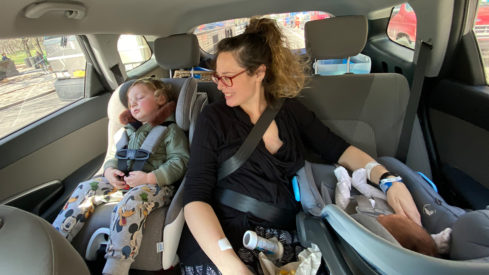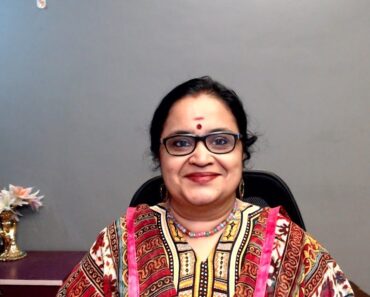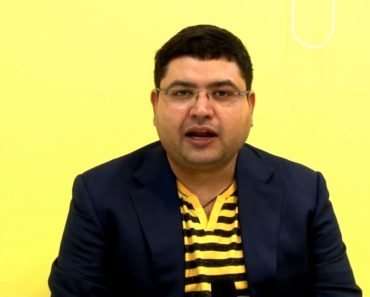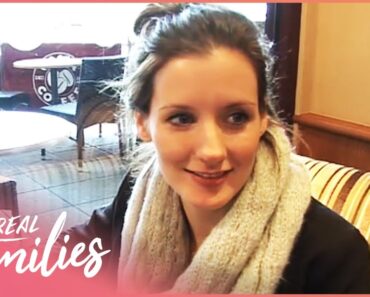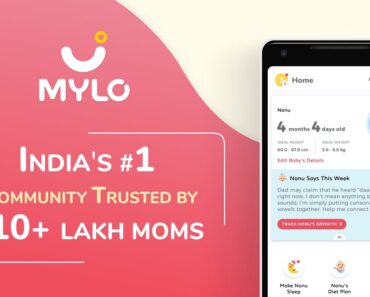My due date was April 1. As the day we’d anticipated for nine long months loomed closer, so did the coronavirus. Outside the door of our Brooklyn apartment, more and more people wore masks, and our local stores ran low on disinfectants and fever meds. Posted reminders to wash our hands became bright red “DO NOT ENTER IF…” signs on the door to my OB’s office. Doctor friends told us to stock up on food, and the school where I teach started to prepare for remote learning.
My prenatal appointments became more about the what-ifs of coronavirus than pregnancy. My questions were all about the safety of the hospitals, whether we should leave New York, and what would happen if I got sick with COVID-19 and then went into labour.
My husband and I agonized over who would care for our two-year-old son when we had to go to the hospital. His normally doting grandparents were now understandably nervous about rushing into the city quickly becoming the new epicentre of the pandemic. My school and my son’s preschool had now been closed for two weeks. Friends and neighbours in the city lovingly offered to watch him, but everything made us anxious. What if they were asymptomatic carriers? What if we were asymptomatic carriers? Who would answer our texts and calls if I went into labour at 3 a.m.?
On March 23, I called my doctor’s office to confirm my 39-week appointment for the next day. The receptionist, whom I’ve known through two miscarriages and the birth of my son, said yes, the appointment was still happening. But then there was a pause on the line.
“Also, I need to tell you that the hospital has changed its policy. No visitors, including spouses,” she said. “I’m so sorry.”
My mind racing, I took a deep breath and tried to hold onto logic and practicalities. This meant nobody else could accompany women in labour—no partners, no doulas, no grandmas-to-be. I asked if my husband would be allowed in the hospital to fill out the paperwork and carry my heavy hospital bag, or if I’d have to do that alone. She said he wouldn’t even be allowed in the building. He would have to drop me off at the curb.
I hung up the phone, my husband hugged me, and we both cried. He would miss the birth of our second child—our baby girl.
In some ways, we tried to see the silver linings. My son could now stay happily at home with his dad, and the baby and I would be safer in a hospital filled with fewer people. I clung to those ideas, and they became my mantras. My son will be happy. My daughter will be safe. My son will be happy. My daughter will be safe.
The next morning I thought I was experiencing contractions. With my first baby, I’d been induced, so I didn’t know what to expect, but I knew something was different this time. I called my doctor. Because I was Group-B-strep positive, and because of the pandemic, and because it was my second pregnancy, and because I live 45 minutes from the hospital, my doctor said I had to come in and get checked out. I gathered my “hospital bag” (an IKEA bag full of tightly sealed Ziplocs to protect my belongings from flying germs) and my husband and son and I piled into the car for the trip to Mount Sinai Hospital in Manhattan. We left at 8:30 on a weekday morning, normally a time that would have us facing down at least an hour of rush-hour traffic, but we sailed across the Brooklyn Bridge and right up the FDR.
I braced myself for the curbside drop off. As we neared Mount Sinai, I explained to my son that I had to go to the doctor, but Daddy would stay with him and I would be home soon. Like most toddlers, he was oblivious to the gravity of the moment. “OK! Bye Mama!” he said.
I was checked in quickly, with some pitying eyes from the nurses and front-desk staff—it was the first full day patients had to come in without their partners, and the sight of a woman in labour, carrying her own bag, alone, was clearly jarring to everyone. I was offered hand sanitizer and a mask, asked some questions about symptoms, and ushered to a private space.
An hour later, I texted my husband to come back and pick me up. False alarm. “Normal third-trimester symptoms.” Probably Braxton-Hicks. So embarrassing—how could I not know I wasn’t in labour? Where was my maternal instinct? But I was happy to have had a test run. Now I knew where to go, and what to expect.
That night I had arranged a virtual game night with my parents and sister. As we worked out the technical difficulties and hit start on the first round, my water broke. My sister jokingly asked if we could still play one quick round, and my delighted parents wished us luck. After promising to send regular updates, I closed the computer and gathered my bag while my husband scooped our sleepy son out of bed and carried him to the car.
It was 9 p.m, and we cruised over the Brooklyn Bridge and up the FDR once more. I hugged my husband at the curb, knowing this was it. I kissed my son on the forehead and told him I’d see him soon. I felt a deep pang of sadness—he’d never again be an only child. “Bye Mama, I love you,” he said sweetly. He had no idea how his world was about to change.
Thirty minutes later, I had been hand-sanitized and masked and questioned and set up in a delivery room. I sent my husband a photo of me smiling behind the mask, and one of the small clear plastic bassinet that would soon hold our daughter.
My nurse was so kind. This was her first shift since the spousal ban, and the first thing she did was apologize. She assured me she’d be with me the whole time, and even with her mask on, I could see the empathy in her face. I asked for an epidural as I’d planned, and the anesthesiologists arrived quickly to administer it. In fact, everything was happening quickly. My doctor said they’d start Pitocin, too, even though my water broke naturally, because they wanted labours to move along as efficiently as possible. Instead of 48 hours, we’d only get to stay in the hospital for 24. They wanted me to rest up, and prepare to push hard, in a race against the clock.
My daughter and my body got the memo, and the contractions increased after the epidural. In fact, the epidural couldn’t keep up, and I was quickly in far more pain than my first birth. Multiple anesthesiologists came back to check the epidural. Was it in right? Should it be redone? Can we up the dose? All of them determined that it should have been working. My body was just moving too fast for it to keep up. I jumped from 2 to 4 centimetres dilated, so I FaceTimed my husband and managed to prop the phone against one of my bags so he could see the side of my face. He talked me through the contractions as they became stronger and longer. The nurse let me take the mask off through the worst contractions, and my husband reminded me to breathe. Hearing his comforting voice helped me block out the fluorescent lights, the HGTV that was still (infuriatingly) blaring, and the view of the gigantic temporary COVID-19 tent set up outside my window.
Finally the epidural caught up. The contractions shortened in duration and dulled in intensity, and I was able to hang up and sleep.
Twenty minutes later, my doctor woke me up. It was time to push. There was an urgency in her voice. I was fully dilated, and I felt nauseated from lack of sleep (and lack of food, and lack of calm, and lack of partner). It was just after 2 a.m., and I knew I was going to vomit. I tore off the mask and threw up—violently. Then I realized I could no longer hear the baby’s heartbeat through the monitor. The nurses quickly adjusted me. Nothing. They adjusted again, and still nothing, and again, and still nothing. They rolled me over, and I wondered how I would tell my husband our baby girl was gone. Finally, after a frantic minute of adjusting me and the monitors, they found her heartbeat—it had slowed significantly when I vomited, but it was still there. Still steady. I grappled clumsily for my phone, called my husband on FaceTime at 2:16 a.m., and at 2:18 my doctor told me to push—now!
At 2:19 I was holding my baby girl. I cut the cord myself, with her resting on my chest, and held the phone so my husband could see her. She cried and I cried, and the doctor assured me that she was OK.
The next day in the hospital was a bit of a blur. Trying not to feel bitter or lonely, I returned to my mantras: My son was happy. My daughter was safe. She was, thankfully, an easy baby from day one: eating heartily and right away, and giving me some two- and three-hour stretches of cuddles and sleep. We had a private room overlooking Central Park—a splurge my husband and I had agreed would be worth it given the value of isolation and the distraction of a nice view while stuck there alone. We spent a lot of time looking out the hospital window at the park below. I narrated what I saw: a little girl in a pink jacket kicking a soccer ball with her dad. Joggers on the paths giving each other plenty of space as they passed. Flowering trees just beginning to open at the start of spring.
The recovery nurses happily came in when I buzzed them to close my blinds, to hand me my water or to plug in my phone—all of the things my husband would have done. They kept their distance and didn’t spend longer with us than necessary.
The next morning, my husband and son picked us up. One of the nurses carried my bag out to the sidewalk while I carried my daughter, a swaddle blanket draped over her in an attempt to protect her from the threat of germs. My husband met us on Fifth Avenue, next to the grassy area that now houses the COVID-19 field hospital. I told him not to hug us until we’d changed out of our possibly-infected hospital clothes, so he gave us each a squeeze and a kiss on the forehead and he tried not to tear up.
My son was already snoozing in the car. A few minutes later, as we crossed back over the Brooklyn Bridge, he sleepily woke up from his car nap and gazed over to see me, and his new baby sister, safely buckled into the backseat next to him.
The day after we got home, New York State Governor Andrew Cuomo issued an executive order that forced hospitals to lift the spouse ban for deliveries. Our daughter was born on one of the four days when my husband couldn’t be there. Again, we tried to not to be bitter. We told ourselves it was better that way.
We are home now, together. My son is happy, and my daughter is safe, and we are adjusting as best we can to this new world as a family of four.
Editor’s note:
We hope you enjoyed reading this article from Today’s Parent. We’re working hard to provide our readers with daily digital articles that aim to inform, inspire and entertain you.
But content is not free. It’s built on the hard work and dedication of writers, editors and production staff. We do not make this ask lightly, but if you are able to afford it, a year-long subscription to the print edition of Today’s Parent is only $15. A subscription also makes a great gift for that new parent in your life.
Our magazine has endured for more than 35 years by investing in important parenting stories. If you can, please make a contribution to our continued future and subscribe here.
Thank you.
Kim Shiffman
Editor-in-Chief, Today’s Parent
